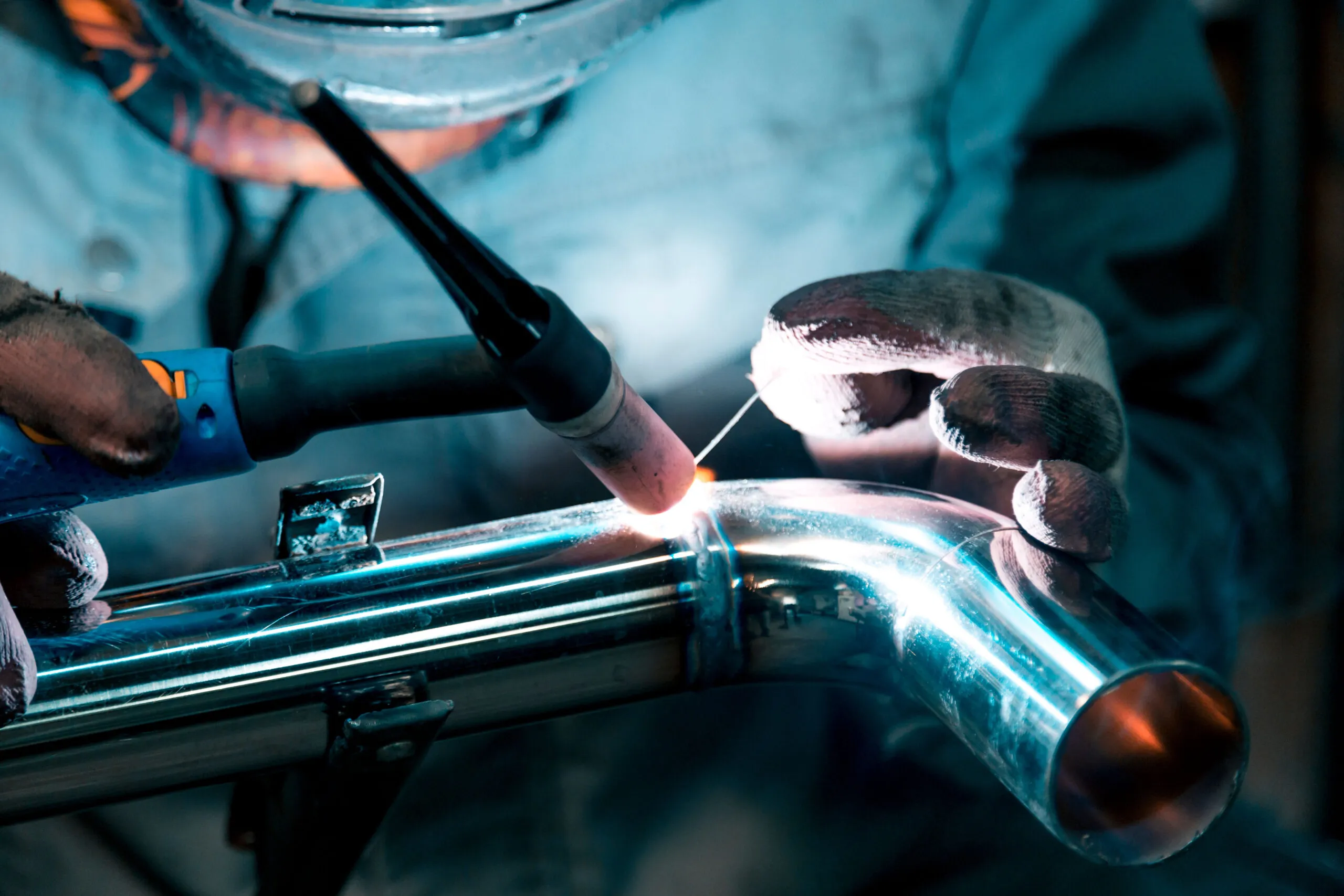
The metallurgical landscape of modern welding encompasses a vast spectrum of alloys, each presenting unique challenges that demand specialized approaches and deep understanding of material behavior. The relationship between welding technique and metal composition creates a complex matrix of possibilities where success depends on matching the right process to the specific characteristics of each alloy. This dynamic interplay between technique and material requires welders to develop sophisticated knowledge that extends far beyond basic process familiarity to encompass the fundamental nature of metallic bonds and crystalline structures.
Navigating the Complexity of Alloy Personalities
Different metal alloys exhibit distinct personalities that manifest during welding operations, creating unique behavioral patterns that experienced welders learn to recognize and adapt to. These personalities emerge from the specific combination of elements within each alloy, creating thermal expansion rates, heat conductivity patterns, and crystalline restructuring behaviors that influence every aspect of the welding process. Understanding these personalities enables welders to anticipate challenges and select appropriate techniques before problems manifest.
Aluminum alloys demonstrate particularly complex personalities that change dramatically based on their specific composition and temper condition. Some aluminum alloys become stronger through heat treatment while others lose strength when exposed to welding temperatures. The oxide layer that forms on aluminum surfaces creates additional complexity, requiring specific preparation techniques and shielding gas selections that differ from other metals. These characteristics demand welding approaches that account for both the base metal behavior and the unique challenges of aluminum oxidation.
Stainless steel alloys present their own set of personality traits that center around their chromium content and its interaction with heat input. The formation of chromium carbides during welding can create corrosion-susceptible zones that compromise the alloy’s fundamental stainless properties. Different stainless steel grades exhibit varying degrees of sensitivity to heat input, requiring welding techniques that minimize thermal damage while achieving proper fusion and penetration.
The Art of Heat Management Across Alloy Families
Heat management represents the cornerstone of successful alloy welding, requiring nuanced understanding of how different metals respond to thermal input and cooling cycles. Each alloy family demands specific heat input strategies that balance penetration requirements with heat-affected zone considerations. The thermal conductivity of different alloys creates varying heat dissipation patterns that influence travel speeds, amperage settings, and cooling procedures.
High-carbon steels require preheating strategies that prevent rapid cooling and the formation of brittle martensitic structures. The carbon content creates hardenability characteristics that can lead to cracking if cooling rates are too rapid. Successful welding of these alloys often involves controlled heating and cooling cycles that manage the transformation of austenite to more desirable pearlitic or bainitic structures.
Titanium alloys present extreme heat management challenges due to their high melting point and reactivity with atmospheric gases at elevated temperatures. The beta transus temperature of titanium alloys creates a critical threshold where microstructural changes occur, requiring precise temperature control to maintain desired mechanical properties. Welding techniques for titanium must create protective atmospheres while managing heat input to prevent contamination and undesirable phase transformations.
Atmospheric Protection Strategies for Reactive Alloys
The interaction between molten metal and atmospheric gases creates unique challenges for different alloy families, requiring specialized shielding strategies that protect the weld pool while maintaining arc stability. Reactive alloys like aluminum, magnesium, and titanium demand inert atmospheric protection that prevents oxidation and contamination during the welding process. The selection of shielding gases becomes crucial for maintaining alloy properties and preventing defects.
Magnesium alloys require particularly careful atmospheric protection due to their high reactivity and tendency to burn in oxygen-rich environments. The low melting point of magnesium combined with its reactivity creates welding challenges that demand specialized shielding gas mixtures and careful heat management. Successful magnesium welding often requires back-purging techniques and extended post-weld protection to prevent oxidation during cooling.
Nickel-based superalloys present atmospheric protection challenges that stem from their complex compositions and high-temperature service requirements. These alloys often contain reactive elements that can form undesirable compounds when exposed to atmospheric contamination during welding. The welding techniques for superalloys must maintain ultra-clean conditions while managing the thermal cycles that affect precipitate formation and mechanical properties.
Filler Metal Selection and Compatibility Matrix
The selection of appropriate filler metals creates a three-dimensional compatibility matrix that considers base metal composition, service requirements, and welding process characteristics. Different alloy families require filler metals that not only provide chemical compatibility but also maintain mechanical properties and corrosion resistance in the final weldment. The interaction between filler metal and base metal during welding creates mixing zones that can exhibit properties different from either constituent material.
Dissimilar metal welding amplifies the complexity of filler metal selection, requiring materials that can bridge the gap between different alloy families while maintaining acceptable properties. The galvanic compatibility of different metals in service environments influences filler metal selection, particularly in applications where corrosion resistance is critical. Understanding these interactions enables welders to select filler metals that provide both weldability and service performance.
Precipitation-hardening alloys require filler metal selections that account for post-weld heat treatment requirements and the formation of strengthening precipitates. The aging characteristics of these alloys influence both the welding technique and the filler metal composition, creating selection criteria that extend beyond simple chemical matching to include thermal treatment compatibility.

Process-Specific Adaptations for Complex Geometries
Different welding processes offer unique advantages for specific alloy families and geometric configurations, creating opportunities for optimization that extend beyond basic technique selection. Custom light boxes and similar precision fabrication projects often require welding techniques that can accommodate complex geometries while maintaining precise dimensional control and superior aesthetic finishes across various alloy types.
Gas tungsten arc welding provides superior control for reactive alloys and thin-section welding, offering precise heat input control and excellent atmospheric protection. The process characteristics make it particularly suitable for aerospace alloys and applications requiring high-quality surface finishes. The ability to weld without filler metal addition enables autogenous welding of certain alloys where filler metal dilution would compromise properties.
Electron beam welding offers unique capabilities for thick-section welding of reactive alloys, providing deep penetration with minimal heat input and excellent atmospheric protection. The process characteristics enable welding of materials that are difficult or impossible to weld using conventional arc processes. The narrow heat-affected zones produced by electron beam welding preserve base metal properties in heat-sensitive alloys.
Advanced Microstructural Considerations
The microstructural changes that occur during welding create property variations that must be considered in technique selection and process parameter development. Different alloy families exhibit characteristic microstructural evolution patterns that influence both mechanical properties and corrosion resistance. Understanding these patterns enables welders to select techniques that optimize final properties while avoiding detrimental microstructural changes.
Duplex stainless steels require welding techniques that maintain the balance between ferrite and austenite phases, as deviation from optimal phase ratios can compromise both mechanical properties and corrosion resistance. The cooling rates and heat input levels must be carefully controlled to prevent excessive ferrite formation or the precipitation of intermetallic phases that can embrittle the material.
Work-hardening alloys present unique challenges where mechanical deformation during welding can create strain-hardened zones adjacent to the weld. The interaction between thermal effects and mechanical deformation requires welding techniques that minimize distortion while managing the heat input to prevent overheating of strain-hardened regions.
Quality Control and Inspection Adaptations
Different alloy families require specialized quality control approaches that account for their unique characteristics and failure modes. The inspection techniques must be selected based on the specific defects that are most likely to occur in each alloy family, creating customized quality control protocols that maximize defect detection while minimizing inspection costs.
Crack-sensitive alloys require inspection techniques that can detect small cracks that might propagate under service conditions. The inspection timing becomes crucial for alloys that exhibit delayed cracking, requiring inspection schedules that account for the time-dependent nature of certain defect types. Non-destructive testing techniques must be selected based on the alloy characteristics and the types of defects that are most critical for service performance.
Corrosion-resistant alloys require inspection techniques that can verify the integrity of passive films and detect sensitization that might compromise corrosion resistance. The inspection protocols must account for the specific corrosion mechanisms that affect each alloy family, creating quality control procedures that ensure long-term service performance.
Conclusion
The comparative analysis of welding techniques across different metal alloy families reveals a complex landscape where success depends on understanding the unique characteristics of each material and matching appropriate processes to specific requirements. The evolution of welding technology continues to expand the possibilities for joining different alloys while creating new challenges that require ongoing learning and adaptation.
The key to successful alloy welding lies in developing comprehensive understanding that encompasses metallurgical principles, process characteristics, and quality control requirements. This knowledge enables welders to make informed decisions about technique selection, parameter development, and quality control procedures that optimize both weldability and service performance. The future of alloy welding depends on continued advancement in both process technology and metallurgical understanding, creating opportunities for joining materials that were previously considered unweldable while improving the quality and reliability of established welding applications.





Leave a Reply